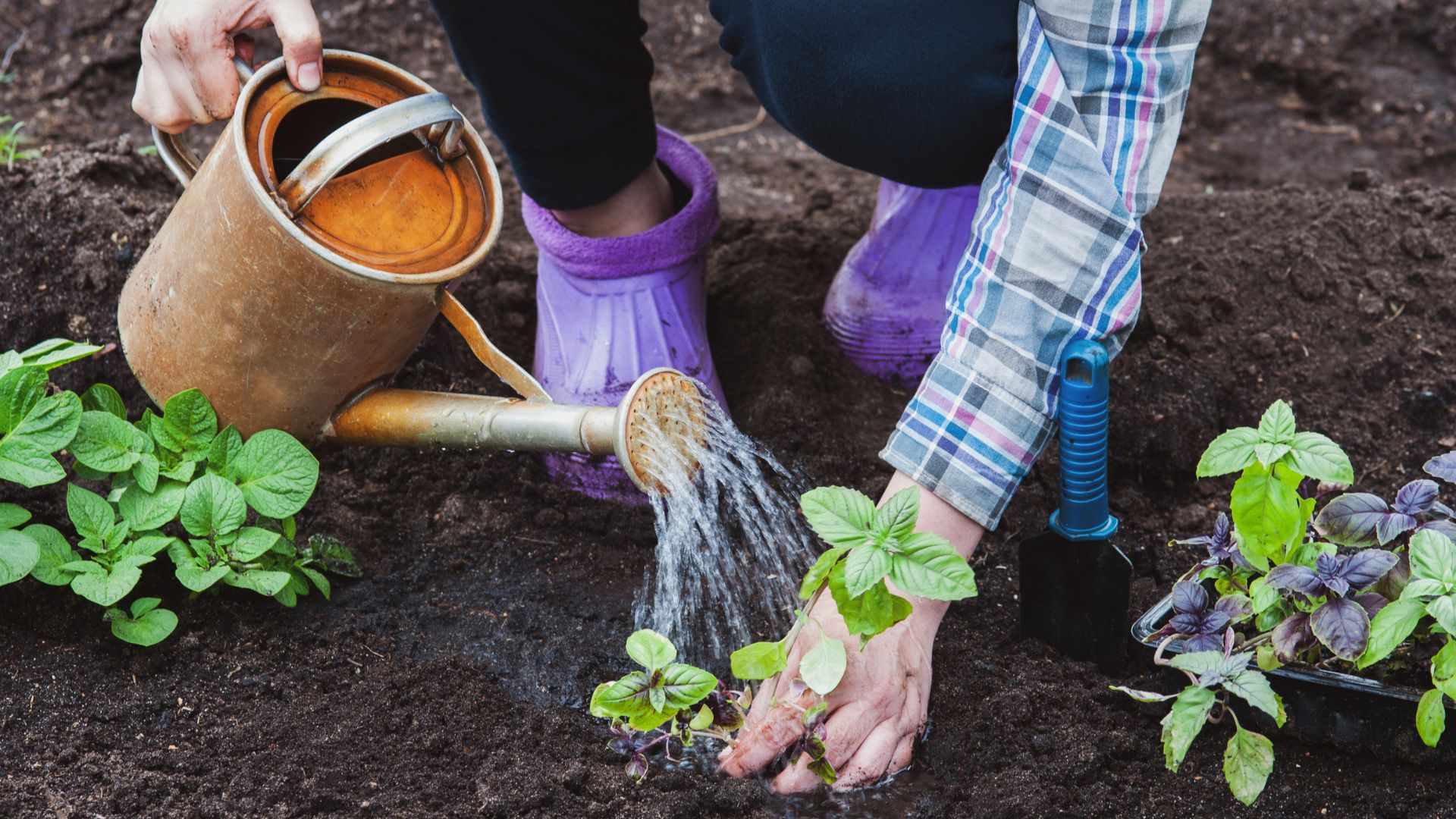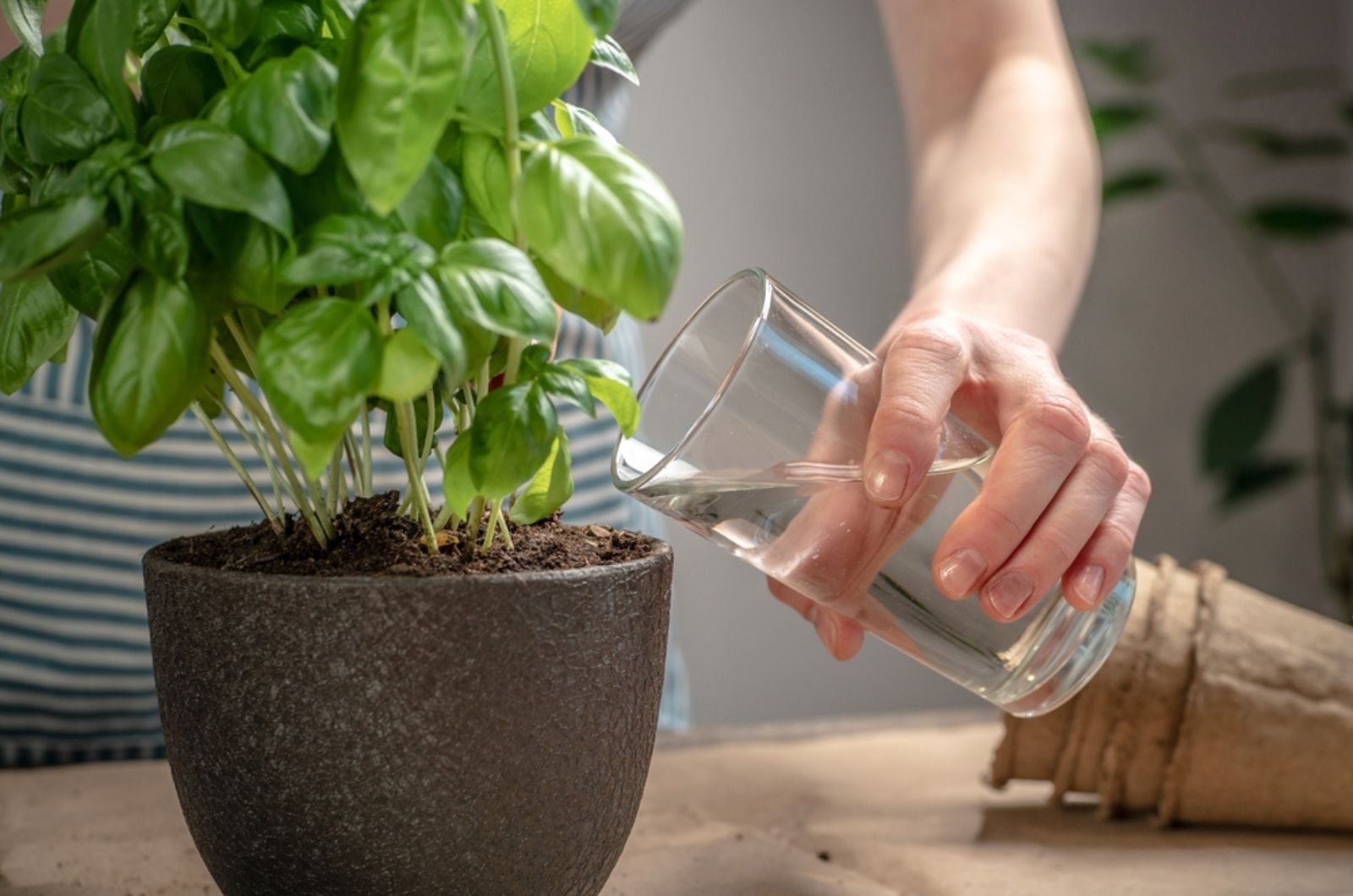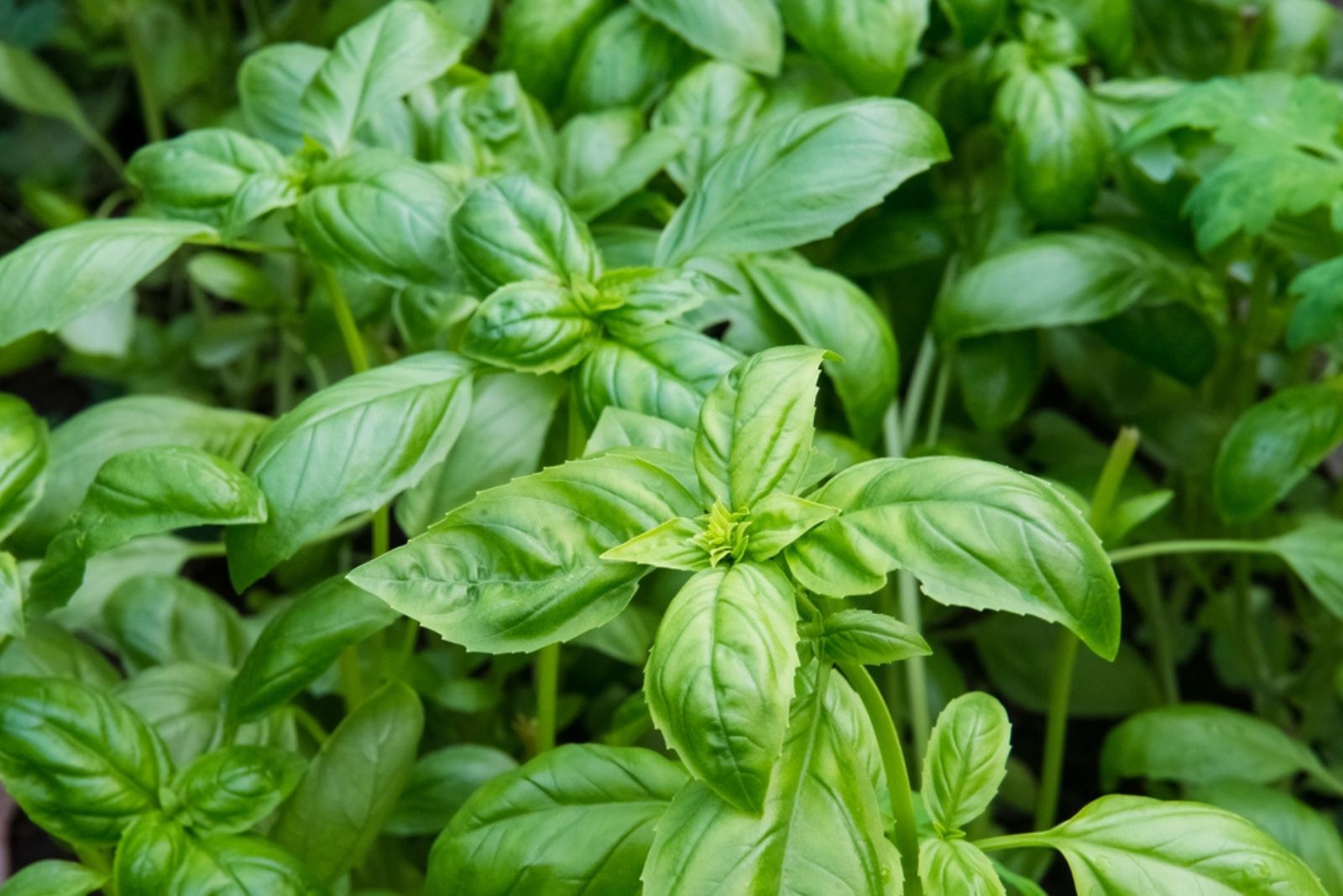With its fragrant leaves and versatile culinary uses, basil is one of the most beloved herbs in many gardens and kitchens. Plus, it’s one of the easiest herbs that you can grow!
Even though basil is quite easy to take care of, there still might be some issues when it comes to watering it. Striking the right balance between not too much and not too little water is the key to lush basil growth and an abundant harvest.
In this article, we are going to cover how to water basil properly, so stay tuned!
Signs Of Underwatered Basil
It’s important to determine what is wrong with your basil – you might be dealing with underwatered or overwatered basil. If you haven’t watered your basil enough, you are probably dealing with underwatering.
The most common signs of underwatering are wilting leaves, dry soil, and drooping and sagging stems.
In this scenario, you should water your basil thoroughly. Give it at least an inch of water every week in order for the basil to stay healthy and hydrated.
Signs Of Overwatered Basil
On the other hand, if you have been giving your basil more water than it needs, then you are dealing with a much bigger issue. Overwatering often leads to root rot, which is a fungal disease that can completely ruin your basil.
Yellow basil leaves, a wilting plant, smelly soil, and brown spots are common signs of overwatered basil.
If the soil is smelly and soggy, then you should check the roots to see if they have started rotting – if so, remove the rotten parts and repot the plant in fresh soil.
All About Watering Basil
In this section, we are going to dig deeper and learn more about how basil plants hold water and the perfect time to water basil.
Let’s dive in!
How Basil Holds Water
Basil is a herbaceous plant that loves humidity – it is able to absorb moisture through its leaves and store it there. So, in order to have a thriving basil plant, it is necessary to keep the humidity levels a bit higher.
Therefore, you should mist the plant in addition to watering. Still, you have to give plenty of water to their roots so that they don’t dry up!
You can either use a watering can or the shower setting on your hose and water the plant around its base. Avoid watering the leaves as wet leaves are more prone to fungal diseases and pests.
When the water starts to pool, stop watering for about 2 to 3 minutes – after that, check if the top 2 inches of the soil are wet. If not, continue watering until they are.
When To Water Basil
Since basil likes to grow in moist soil, it is important to give it deep watering. We already said that the top 2 inches of the soil have to be moist so the water won’t evaporate as quickly.
It is also important that the moisture reaches the roots deep down in the soil. Most basil plants need one deep watering during the week, but this can vary based on the growing conditions.
For instance, if there is rain or your basil is not kept in direct sunlight throughout the day, then it probably won’t need as frequent watering.
If you are growing basil outdoors, it’s best to water it early in the morning so that the water doesn’t evaporate too quickly.
Indoor vs Outdoor Watering Schedule
As we stated earlier, the watering requirements actually depend on the environment that your basil is growing in. For example, if you are growing a potted herb outdoors, it will probably need watering every two to four days because evaporation is much faster.
Potted herbs generally dry out faster than ones grown in the ground, so they need to be watered more frequently.
Still, other growing conditions also play an important role in the overall health of your basil plant. Stick to checking the soil and observing if there are any leaf discolorations.
Here’s what you should also pay attention to:
• Soil type – well-draining soil with the pH levels between 6.0 to 7.5 is the best for basil plants.
• Light – basil should be exposed to direct sunlight for about 6 to 8 hours during the day. Pale green leaves indicate that the basil is not getting enough sunlight. Protect your basil from the scorching midday sun.
• Temperature – these plants thrive in temperatures ranging between 80 to 90 degrees Fahrenheit. Everything above and below would stress the plant and cause damage.
• Humidity – humidity levels between 40% and 60% are ideal for basil plants.
• Potting container – potted basil must grow in a pot that has drainage holes in the bottom. In the beginning, the perfect pot size is about 9 inches deep and 12 inches wide.
Also read: 21 Best Basil Companion Plants + Some Plants To Avoid



